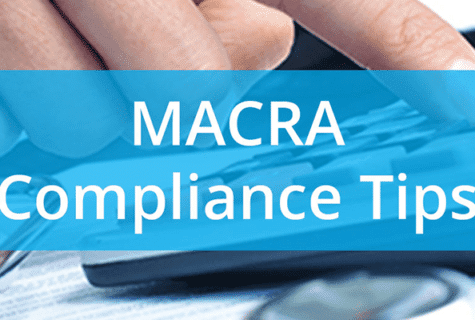
If the pending proposed Quality Payment Program (QPP) rule released Jun 20th is finalized later this year, it will be easier for small physician practices (defined at 15 or few eligible clinicians) to earn automatic bonus points and earn hardship exemptions due to electronic health record (EHR) requirements.
The currently approved plan states that practices that bill Medicare for $30,000 in Part B charges or see 100 Medicare patients in 2017 must comply with MACRA guidelines. The new proposed plan increases these thresholds to $90,000 or fewer than 200 Medicare patients for 2018.
Another proposed change gives small practices the opportunity to add five points to their total Merit-Based Incentive Payment System (MIPS) performance score “as long as the eligible clinician or group submits data on at least one performance category in the applicable performance period.” This can significantly help practices meet the proposed 15-point performance goal.
Here are additional proposed changes to the QPP rule you should be aware of:
- Quality Reporting – no change. If you’re an eligible provider, you’ll still be required to report 6 quality measures for at least 50% of your encounters that meet measure specifications.
- Improvement Activities (IAs) – no change. The majority of eligible clinicians will be required to report 4 activities under this category. However, if you’re in a rural or geographic health professional shortage area you’re only required to report 2 activities. Providers who are in rural areas, geographic health professional shortage areas or meet the definition of non-patient facing must report two activities to receive a full score.
- Advancing Care Information (ACI) – some change. To participate in ACI, approved medical professionals can potentially use the 2014 or 2015 edition of the Certified Electronic Health Record Technology (CEHRT) next year. This is flip from CMS’ final rule last year. The new guidelines require providers that use the 2015 CEHRT to report 15 measures while those that use the 2014 CEHRT would only have to report 11. Additional proposed changes to ACI rules state that small practices are more likely to benefit from the hardship exemption so they can avoid being scored on their ACI performance. The pending rule states that there will be added exclusions for the e-prescribing and health information exchange measures. CMS potentially will approve clinicians “to not report on the immunization registry reporting measure and potentially earn 5% each for reporting any of the public health and clinical data registry reporting measures as part of the performance score, up to 10%.”
- Scoring Allocation: The approval of the pending rule would keep scoring allocations the same in 2018 (i.e. Quality = 60%, Advanced Care Information = 25%, and Clinical Practice Improvement Activities = 15%).
- Resource Use: Based on the current approved rule, effective 2018, resource use (or cost) would be worth 10% of scoring. However, CMS has proposed delaying this requirement until the 2020 payment year “to improve clinician understanding of the measures and continue development of episode-based measures that will be used in this performance category.”
- Reporting Periods: The proposed rule requires quality measures to be reported for a full year. This is an increase to the 90 days currently in place for 2017. However, the performance period reporting requirements for ACI and IA won’t change, staying at 90 days.
- Virtual Groups: For reporting, “virtual groups” (single practitioners or those with 10 or fewer providers) can virtually get together and report their MIPS quality data together as if they were a merged practice. However, in order to qualify to be considered a virtual group, you must elect and qualify the “virtual group reporting” option before January 1, 2018.
